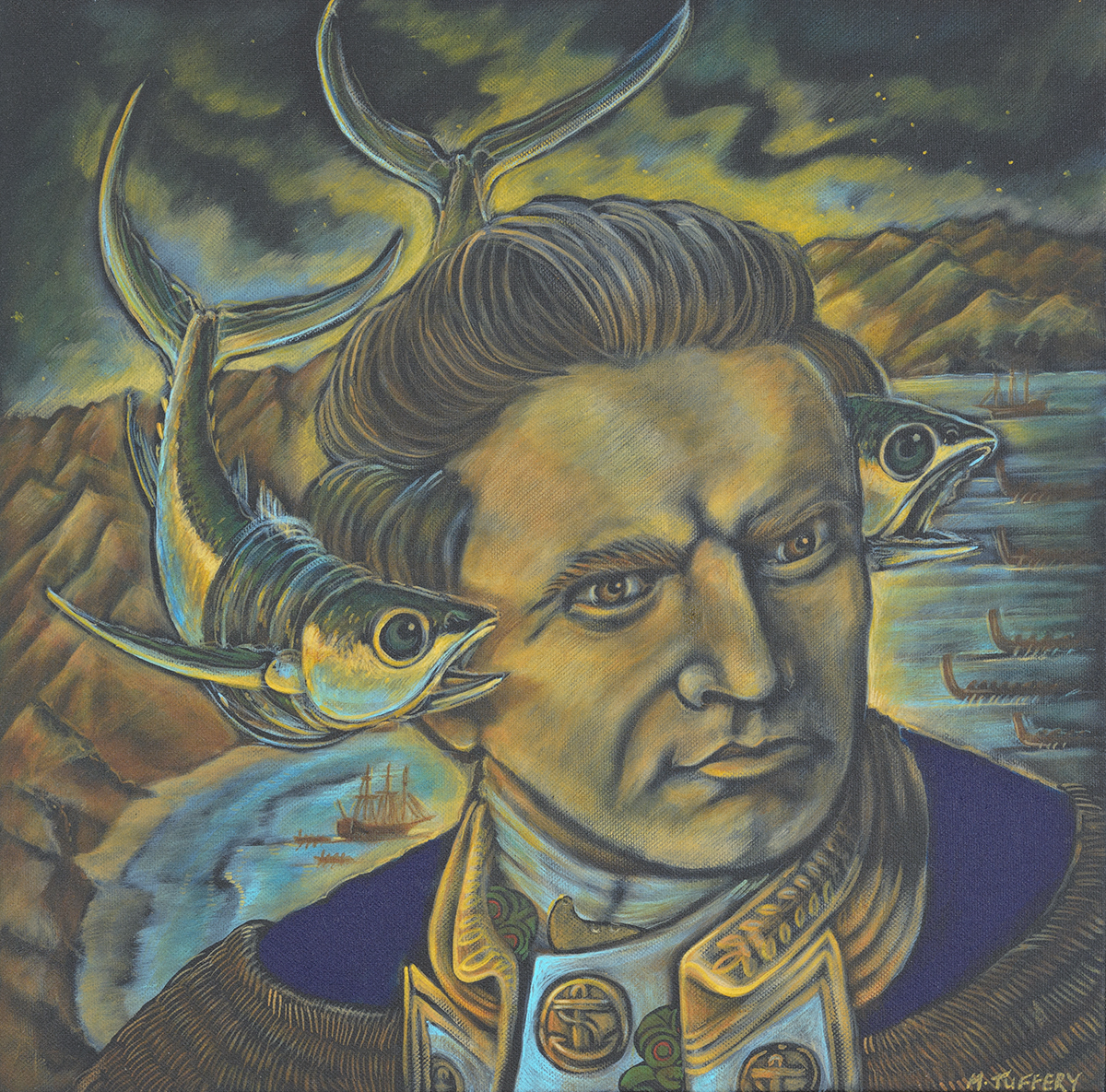John Keyes Sherwin (engraver, 1751–1790), after Nathaniel Dance (1735–1811), Proof Plate of Portrait of Captain James Cook (detail), c. 1779, nla.cat-vn21022552
Captain James Cook is an enigma. A complex and almost mythical figure in history. His legacy is mixed. For some, he is the great navigator, sailor and commander. For many First Nations peoples across the Pacific, he symbolises centuries of dispossession.
The scientific achievements of his voyages were immense. Yet each Pacific encounter was two-sided, and today, Cook and the impact his voyages had on First Nations peoples continue to resonate powerfully.
So who was Captain Cook? For a man who would go on to such iconic status, James Cook came from humble beginnings. He was born in Yorkshire in 1728, the son of a farm labourer.
He was bright and intelligent and was apprenticed to a ship owner - sailing coal ships in the North Sea, English Channel, Irish Sea and Baltic Sea - before joining the Royal Navy in 1755 where he quickly rose through the ranks.
In 1768, Cook was made a lieutenant and given the command of the Bark Endeavour. On 25 August 1768, Cook set sail from Plymouth, bound for Tahiti where he would observe the Transit of Venus.
It was the first of three Pacific voyages.
Cookie in Te Wai Pounamu Meets Cook Strait
Michel Tuffery (b.1966)
Cookie in Te Wai Pounamu Meets Cook Strait 2011
acrylic on canvas
Courtesy of the artist and Andrew Baker Art Dealer, Brisbane
Artist statement: ‘Depicts Cookie when he realised Te Wai Pounamu (South Island) and Te Ika a Maui (North Island) weren’t connected, whence is the reason why it’s named the ‘Cook Strait’. The Ika in his ears are a metaphor to Tupaia, an Arioi from Raiatea; there is no existing image of Tupaia. He was Cookie’s constant guide and translator on his first voyage.’
